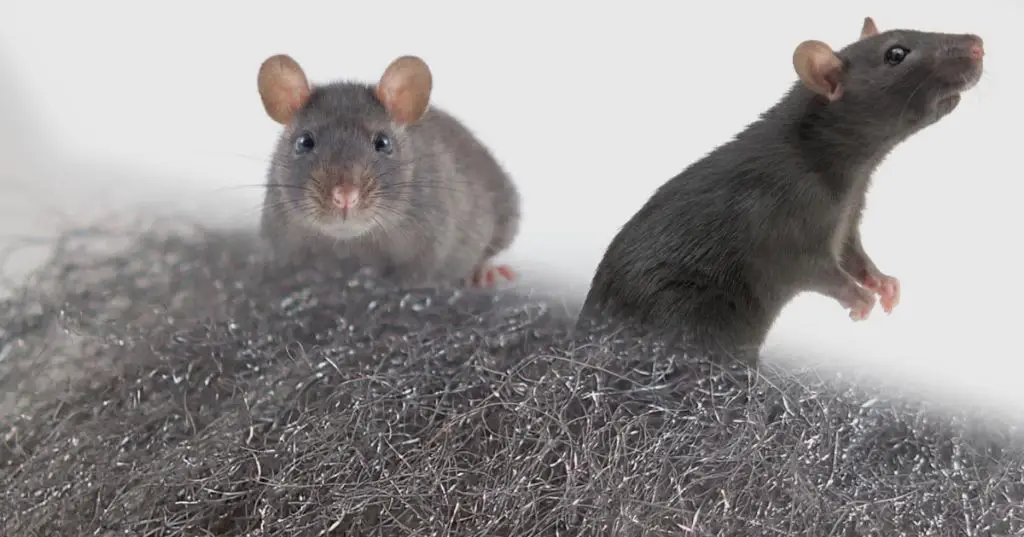Mice can be a frustrating pest to deal with. They can find their way into homes and buildings through small cracks and crevices, causing damage by chewing on insulation, wires, wood, paper, and more. Many homeowners try using steel wool as a deterrent to keep mice from entering their homes or buildings. But does steel wool really work for keeping mice out?
Page Contents
How Steel Wool Deters Mice
Steel wool is made of very fine, sharp metal filaments that are twisted together. When mice try to chew through steel wool, the sharp metal strands cause discomfort and pain to their mouths and gums. Mice have very sensitive nerves in their teeth, so chewing on steel wool acts as a deterrent.
The tiny fibers of steel wool are also very difficult for mice to grasp and move out of the way with their teeth or claws. The dense, tangled strands create a barrier that is uncomfortable and frustrating for mice to work through.
Using Steel Wool to Block Entry Points
Steel wool can be used to block small openings where mice may gain entry, such as:
- Around pipes
- Inside cracks in walls or floors
- Under doors or around door frames
- Inside openings to attics or crawl spaces
- Around vents, ductwork, wiring holes
Plugging these openings with steel wool makes it difficult and uncomfortable for mice to chew and claw their way through. Many pest control experts recommend combining steel wool with caulk as an effective sealant.
The steel wool fibers swell when they come in contact with the caulk. This helps create a tighter barrier and seals up any spaces within the steel wool itself that mice could otherwise squeeze through.
Limitations of Steel Wool
While steel wool can be a helpful deterrent, there are some limitations to its effectiveness:
- Very small openings may still allow young mice to pass through
- Mice may eventually chew through steel wool if sufficiently motivated
- Steel wool must completely block access – any gaps can be exploited
- It only deters entry, it doesn’t stop mice already inside the home
- Steel wool will not prevent mice from entering through doors, windows, etc
Using steel wool alone without addressing other potential entry points may not solve a mouse problem entirely. Persistent mice may eventually find or create new openings.
Tips for Using Steel Wool
Here are some tips to get the most deterrent effect from steel wool:
- Use coarse steel wool (grades #2, #3 or #4) rather than extremely fine steel fibers
- Pack the steel wool tightly into openings so there are no gaps
- Always combine with caulk for a tighter seal
- Inspect areas sealed with steel wool regularly for any new gnawing or holes
- Look for and seal all potential entry points, not just visible signs of access
- Remove other attractants and food sources to discourage mouse activity
Other Effective Repellents and Deterrents
In addition to steel wool, there are some other deterrents that can be used to make areas less attractive or block access for mice:
- Peppermint oil: Strong smell repels mice.
- Ammonia-soaked cotton balls: Alters scent trail cues.
- Mothballs: Unpleasant odor keeps mice away.
- Cayenne pepper: Irritates feet and nasal passages.
- ultrasonic repellents: Emits high-frequency sound waves.
- Snap traps: Quickly traps and kills individual mice.
- Glue boards: Non-toxic sticky traps prevent entry.
Preventative Maintenance and Exclusion
While steel wool and other deterrents can help keep mice away, the most effective long-term solution is preventative exclusion and maintenance to remove entry points. This includes:
- Sealing all cracks, holes, and gaps with caulk or expanding foam
- Installing weather stripping around doors and windows
- Covering vents and drainage points with steel mesh
- Keeping vegetation trimmed back from building exterior
- Installing kick plates on exterior doors
Removing food sources and nesting sites through good sanitation and cleaning is also key. With diligent exclusion and maintenance, steel wool may only be needed for temporary deterrent uses.
Conclusion
Steel wool can be an effective temporary deterrent against mice gaining entry into a home or building when properly placed inside cracks, holes, and openings. However, mice may eventually chew through it, so steel wool alone is not a complete solution.
For best results, combine steel wool with caulk to block outdoor entry points and use additional repellents and deterrents inside. Practice preventative exclusion and maintenance to eliminate entryways permanently. Addressing the root causes of infestation is key for keeping mice out over the long term.
